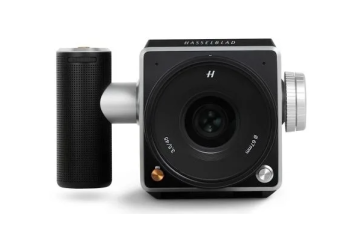Introduction
In the realm of audio production, sound mixing stands as a cornerstone for achieving professional-quality results. Whether you’re crafting a musical masterpiece, enhancing dialogue for film, or refining the clarity of a podcast, mastering the art of sound mixing is essential. In this article, we’ll delve into the nuances of sound mixing and provide actionable tips to elevate your audio productions to new heights.
Understanding Sound Mixing
Definition and Purpose: Sound mixing, often referred to as audio mixing or simply mixing, is the process of combining multiple audio tracks into a cohesive and balanced blend. The primary goal of sound mixing is to achieve clarity, depth, and sonic coherence, ensuring every element of the audio is heard with precision and impact.
Basic Elements of Sound Mixing: At its core, sound mixing involves manipulating various audio parameters such as volume, frequency, dynamics, and spatial positioning to create a harmonious sonic landscape. Understanding these fundamental elements is crucial for effective sound mixing.
Essential Tools for Sound Mixing
Digital Audio Workstations (DAWs): A DAW serves as the central hub for sound mixing, providing a platform for recording, editing, and processing audio tracks. Popular DAWs such as Pro Tools, Logic Pro, and Ableton Live offer a wide range of features and functionalities tailored to sound mixing workflows.
Audio Plugins and Effects: Audio plugins, including EQs, compressors, reverbs, and delays, play a pivotal role in shaping the sonic characteristics of audio tracks. These virtual effects can be applied within a DAW to enhance clarity, dynamics, and spatial imaging.
Hardware vs. Software: While traditional hardware mixing consoles still hold relevance in professional audio production, the advent of digital technology has democratized sound mixing, allowing enthusiasts and professionals alike to achieve outstanding results with software-based solutions.
Key Techniques for Professional Sound Mixing
Gain Staging: Proper gain staging ensures optimal signal-to-noise ratio and prevents distortion throughout the mixing process. By carefully setting input and output levels, you can maintain audio fidelity and headroom while mixing.
Equalization (EQ): EQ allows you to sculpt the frequency balance of audio tracks, enhancing clarity and reducing masking between instruments or voices. Use EQ to carve out space for each element within the mix and address tonal imbalances.
Compression: Compression controls the dynamic range of audio signals, smoothing out volume fluctuations and adding punch and presence to sounds. Apply compression judiciously to tame peaks and enhance the overall impact of the mix.
Panning: Panning determines the spatial placement of audio sources within the stereo field, creating a sense of width and depth. Experiment with panning to position instruments or vocals for optimal separation and balance.
Reverb and Delay: Reverb and delay effects add depth, dimension, and ambience to audio tracks, simulating natural acoustic environments or creating ethereal textures. Use these effects sparingly to enhance realism or evoke specific moods within the mix.
Tips for Effective Sound Mixing
Reference Tracks: Compare your mix against professionally mixed and mastered tracks in a similar genre to gauge tonal balance, dynamics, and overall sonic quality. Reference tracks provide valuable insights and benchmarks for achieving competitive results.
Room Acoustics: Optimize your mixing environment by addressing acoustic issues such as reflections, resonances, and standing waves. Acoustic treatment and proper speaker placement can mitigate unwanted coloration and ensure accurate monitoring.
Monitor Calibration: Calibrate your studio monitors to provide an accurate representation of the audio signal. Use measurement tools and reference materials to establish a flat frequency response and minimize discrepancies between playback systems.
Take Breaks: Fatigue can impair judgment and lead to suboptimal mixing decisions. Take regular breaks during extended mixing sessions to rest your ears and maintain focus, allowing for more objective evaluation of the mix.
Common Mistakes to Avoid
Overprocessing: Avoid excessive use of effects and processing, which can result in a cluttered and unnatural-sounding mix. Prioritize clarity and transparency, and only apply processing that serves a specific purpose.
Ignoring Dynamics: Preserve the dynamic range of your mix to maintain musicality and expressiveness. Avoid heavy-handed compression or limiting that squashes dynamics and robs the music of its energy and emotion.
Neglecting Low-End Frequencies: Pay attention to the low-end of your mix, as it forms the foundation and energy of many musical genres. Ensure that bass instruments and kick drums are well-defined and balanced, without overpowering other elements.
Advanced Sound Mixing Techniques
Parallel Processing: Parallel processing involves blending processed and unprocessed audio signals to achieve greater control and impact. Experiment with parallel compression, EQ, and saturation to add depth and character to your mix.
Multiband Compression: Multiband compression allows for targeted dynamic control across different frequency bands, providing surgical precision in shaping the tonal balance of audio tracks. Use multiband compression to address specific frequency issues and enhance clarity.
Sidechain Compression: Sidechain compression utilizes one audio signal to trigger compression on another, creating dynamic interactions and enhancing mix clarity. Apply sidechain compression to duck or emphasize certain elements within the mix, such as vocals against a dense instrumental arrangement.
The Role of Sound Mixing in Different Mediums
Music Production: In music production, sound mixing is essential for blending individual tracks into a cohesive and balanced whole, allowing each instrument and voice to shine while serving the overall musical vision.
Film and Television: In film and television, sound mixing plays a crucial role in enhancing storytelling, creating immersive soundscapes, and balancing dialogue, music, and sound effects for optimal clarity and impact.
Podcasting and Radio: In podcasting and radio production, sound mixing is key to delivering clear and engaging content to listeners, ensuring that voices are intelligible, music is well-balanced, and sound effects are seamlessly integrated.
Conclusion
Mastering the art of sound mixing requires a combination of technical expertise, creative intuition, and relentless experimentation. By applying the tips and techniques outlined in this article, you can elevate your audio productions to professional standards and captivate audiences with immersive and impactful sound experiences.

FAQs After The Conclusion
1. Do I need expensive equipment to achieve professional-quality sound mixing? While high-quality equipment can certainly enhance the sound mixing process, it’s possible to achieve excellent results with affordable gear and careful attention to technique and craft.
2. How long does it take to become proficient at sound mixing? Becoming proficient at sound mixing is a gradual process that requires practice, patience, and dedication. With consistent effort and a willingness to learn, you can steadily improve your skills and achieve professional-level results.
3. What is the difference between sound mixing and sound mastering? Sound mixing involves combining and balancing individual audio tracks, while sound mastering focuses on preparing the final mix for distribution, ensuring consistency, clarity, and compatibility across different playback systems.
4. Can I learn sound mixing online? Yes, there are numerous online resources, tutorials, courses, and communities dedicated to teaching sound mixing techniques and principles. Take advantage of these resources to expand your knowledge and skills at your own pace.
5. How can I stay updated on the latest sound mixing trends and technologies? Stay connected with the audio production community through forums, social media, industry events, and publications. Networking with fellow professionals and staying curious about emerging technologies will keep you informed and inspired.
6. What role does creativity play in sound mixing? Creativity is essential in sound mixing, as it allows you to experiment with unconventional techniques, explore new sonic possibilities, and infuse your mixes with unique artistic expression.
7. Can I mix audio on headphones, or do I need studio monitors? While studio monitors provide a more accurate representation of sound, it is possible to mix on headphones with proper calibration and monitoring techniques. However, it’s advisable to reference your mixes on different playback systems to ensure compatibility.
8. How do I know when my mix is finished? Knowing when a mix is finished is subjective and often comes down to personal judgment and artistic intuition. Trust your instincts, but also seek feedback from trusted colleagues or mentors to gain perspective and refine your final mix until it meets your standards of excellence.













